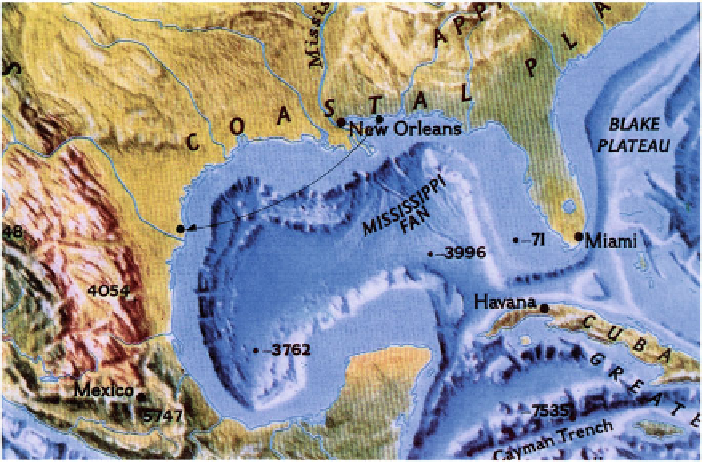Geoscience Reference
In-Depth Information
Fig. 5.2
The trajectory of air over the northwestern Gulf of Mexico superimposed over bathymetry
of the Gulf. Ocean depths are recorded in meters
5.2.2
Governing Equation
Since candidates for the source of bias errors in return flow are uncertainties in
initial conditions, sea surface temperature (SST: boundary condition), and turbulent
transfer of heat and moisture from the sea to the air (turbulence parameterization),
we consider a simplified yet physically meaningful air/sea interaction model that
includes these three elements of control. We assume prior knowledge of the air
trajectory over water (as shown in Fig.
5.2
).
Our governing equation represents the Lagrangian forecast of air temperature
along the known trajectory where elements of control are the initial temperature of
the surface air just east of New Orleans, a sea surface temperature (SST) that is
assumed constant along the trajectory (boundary condition), and a turbulent transfer
coefficient that controls the turbulent heat exchange at the air/sea boundary.
The continuous form of the constraint is
dx
dt
D
C
T
.
x/
(5.1)
where
is
sea surface temperature (SST). In Euler's form of finite differencing, the Lagrangian
forecast of temperature at time step
x
is air temperature,
t
is time,
C
T
is the turbulent transfer coefficient, and
(1 h time steps) is a weighted average of
temperature at the previous time step and the SST that takes the form
k

Search WWH ::

Custom Search